Project to improve technology of tidal range power stations progresses towards demonstrator
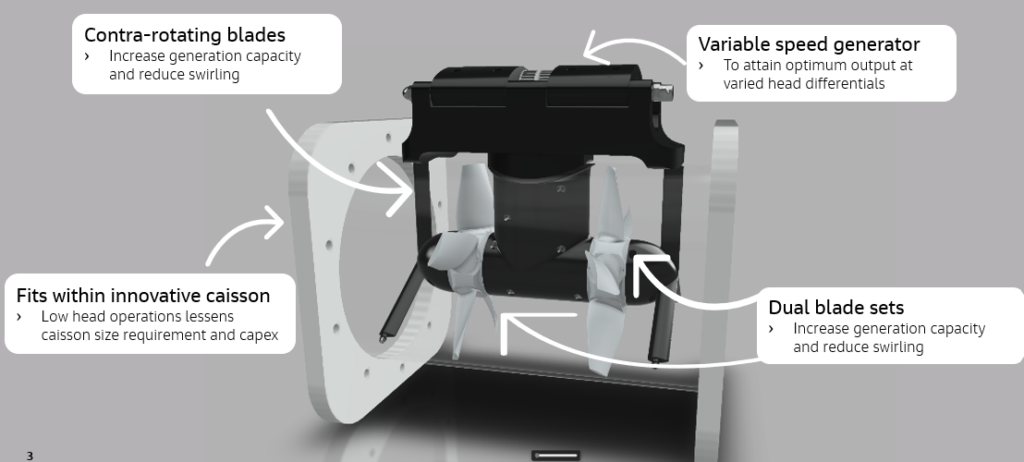
This post was originally published on this site
A pioneering project to improve the technology of tidal turbines and make tidal range projects more commercially viable is progressing towards the operation of lab demonstrator rig in the new year.
Speaking at the British Hydropower Association (BHA) annual conference on 26 November, Jacobs senior associate director, major programmes and projects group Joanna Gray provided an update on the work achieved by the project over its first year of work. The research is being carried out by a consortium led by Jacobs and featuring SETB (Severn Estuary Tidal Bar), Cardiff University, Liverpool John Moores University, the Tidal Range Alliance (part of the BHA), Lancaster University, Roger Falconer Water Consultancy, Shaun Benson Ventures and Amentum.
The west coast of the UK is blessed with some of the highest tidal ranges in the world. Experts have suggested that tidal range projects, such as tidal lagoons and tidal barrages, could become a significant contributor to the UK’s energy mix.
However, there are considerable barriers to bringing these schemes to fruition relating to cost, risk and the uncertain environmental effects. This means thatt no tidal range projects have yet been realised in the UK.
The Jacobs-led project was the beneficiary of an £800,000 grant from UK Research and Innovation last November to kickstart detailed work into means for improving tidal range’s levelised cost of energy. It is doing this by developing a very low head turbine that can be used in depths of just 0.5m to 2.5m, increasing a tidal barrage or lagoon’s energy harvesting range.
At the BHA conference, Gray explained that the project started with a leg up as Jacobs’ subsidiary Halcrow was involved in the Severn Barrage tidal range project when that appeared to be moving forward under private developer Corlan Hafren in 2011, before it was cancelled in 2014.
“We’ve got a lot of IP from that project and we were able to take a step back [and ask] ‘why was tidal range not working?’ It seems like a no-brainer to many of us,” she said.
The main challenge identified was around the cost of developing tidal range projects, with uncertain environmental impacts – especially in sensitive marine environments like the Severn Estuary – being the other.
It was determined that there must be ways to update the technology, given that it has not developed much since the opening of France’s La Rance Tidal Power Station in 1966, with South Korea’s Sihwa Lake Tidal Power Plant, which opened in 2011, using “very similar technology”, according to Gray.
“We felt that there was an opportunity to develop the technology to address the cost challenges and to address the environmental challenges,” she said.
The first step was to develop computational fluid dynamic (CFD) modelling of the turbine, she explained.
“We wanted to develop a digital twin, almost, before we began the physical testing,” she said. The team built on previous research to figure out what is the optimum tidal turbine that could be developed.
“We also wanted to build a rig within the UK to do a physical test in a lab,” she continued. “So we’ve spent quite a while working out how to get that rig working.”
This involved working out the optimum size of lab scale model that could be used to achieve some valuable results.
“We’re at the point now that we’re actually constructing the rig,” she said. “We’ve got a lot of pieces – the pump just came last week, so that’s a really exciting development.
“We’re looking to complete that in January and start testing in February, which will get us moving in the development and will go alongside the CFD modelling.”
Gray explained that the CFD modelling has been used to “test some of our theories in terms of blades, blade spacings, blade profile, blade number, blade pitch, the runner spacing.
“There’s lots of variances that we want to test within the digital model that we’ll then go and test within the physical rig to make sure we can validate those results.”
It is hoped that then the team will be able to “engage with various potential investors, other projects, other industries to really see something tangible that is developing the technology to go forward”, Gray said.
Key features of the turbine

Very low head tidal turbine key features (Copyright: Jacobs)
Gray explained the key features of the very low head tidal turbine that the team is developing.
She explained that it will be a bi-directional turbine, so it is able to harness energy on the flow tide as well as the ebb tide, significantly boosting its potential energy generation.
“It’s also got contra-rotating layers, so we can take the power off separately from the first set of blades and the second set of blades,” she continued. “It’s also got a variable speed gearbox so it can deal with different variations of head and flow.
“And it will fit within an innovative caisson to make it easy to install.”
She explained the fact that it is a very low head turbine means “it will operate down to the level of about half a meter, so it’s broadening the tidal range that you can take power from the bi-directional rotor”.
It will also run at a lower velocity, which will help to minimise the impacts on the environment and fish, Gray said.
“While we’re doing all this, we’re also looking at modern methods of construction; different types of materials for blades and the hub to make it as cheap as possible,” she added.
Lab demonstrator and field demonstrator
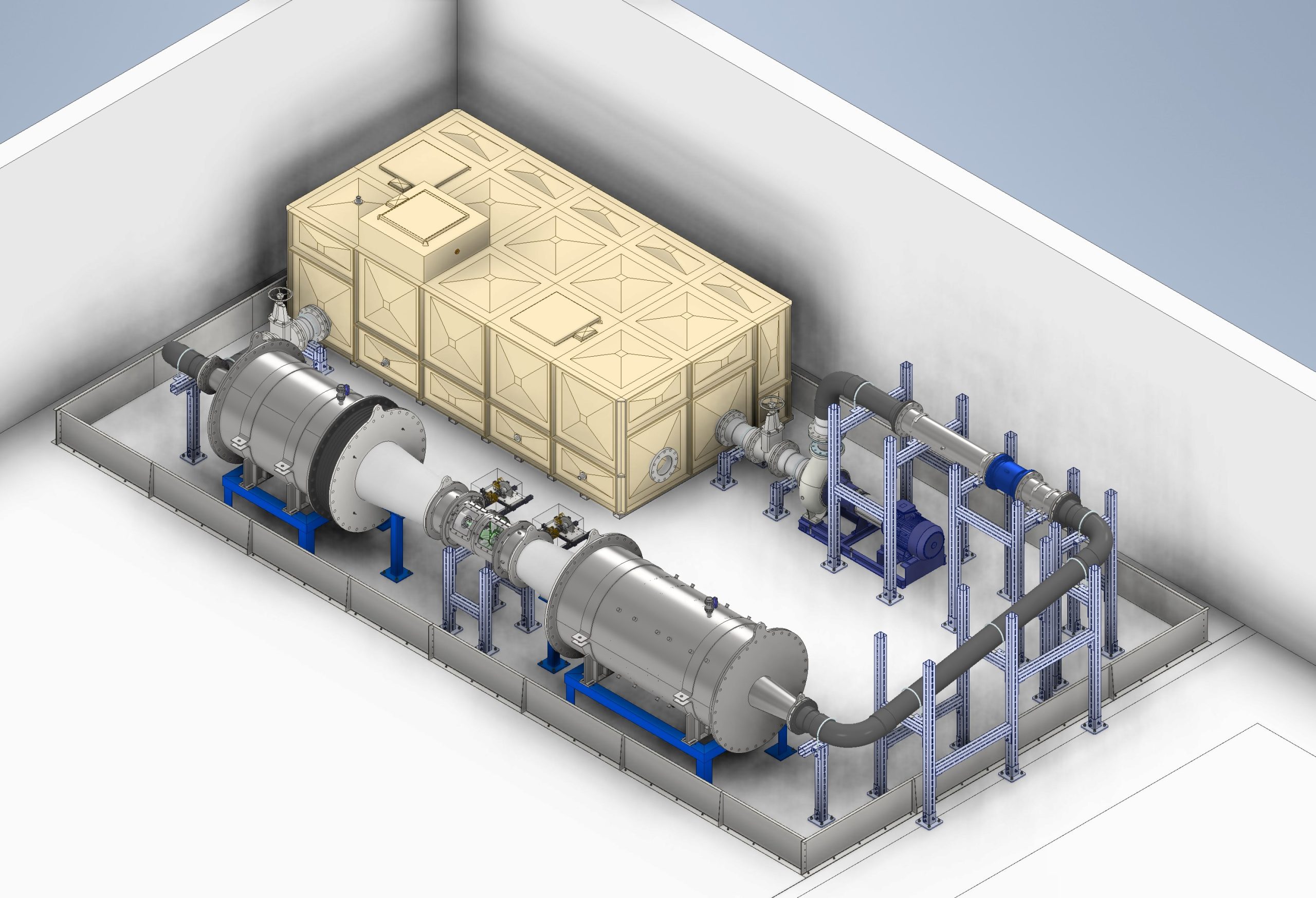
Visualisation of the test turbine rig
Gray also gave more detail on the test rig that is currently being put together in Amentum’s lab.
“The tank itself is going to take about 18,000l of water,” she said. “It starts in the tank then goes through the pipework to the pump, which controls the flow rate so we can mimic the head.
“It goes through the plenum to standardise the flow into the diffuser and then through the actual test turbine, where we’ve got some torque brakes to take the power off, so we can assess what’s happening in each blade.
“It then goes back through another plenum and then back into the tank in a closed loop.”
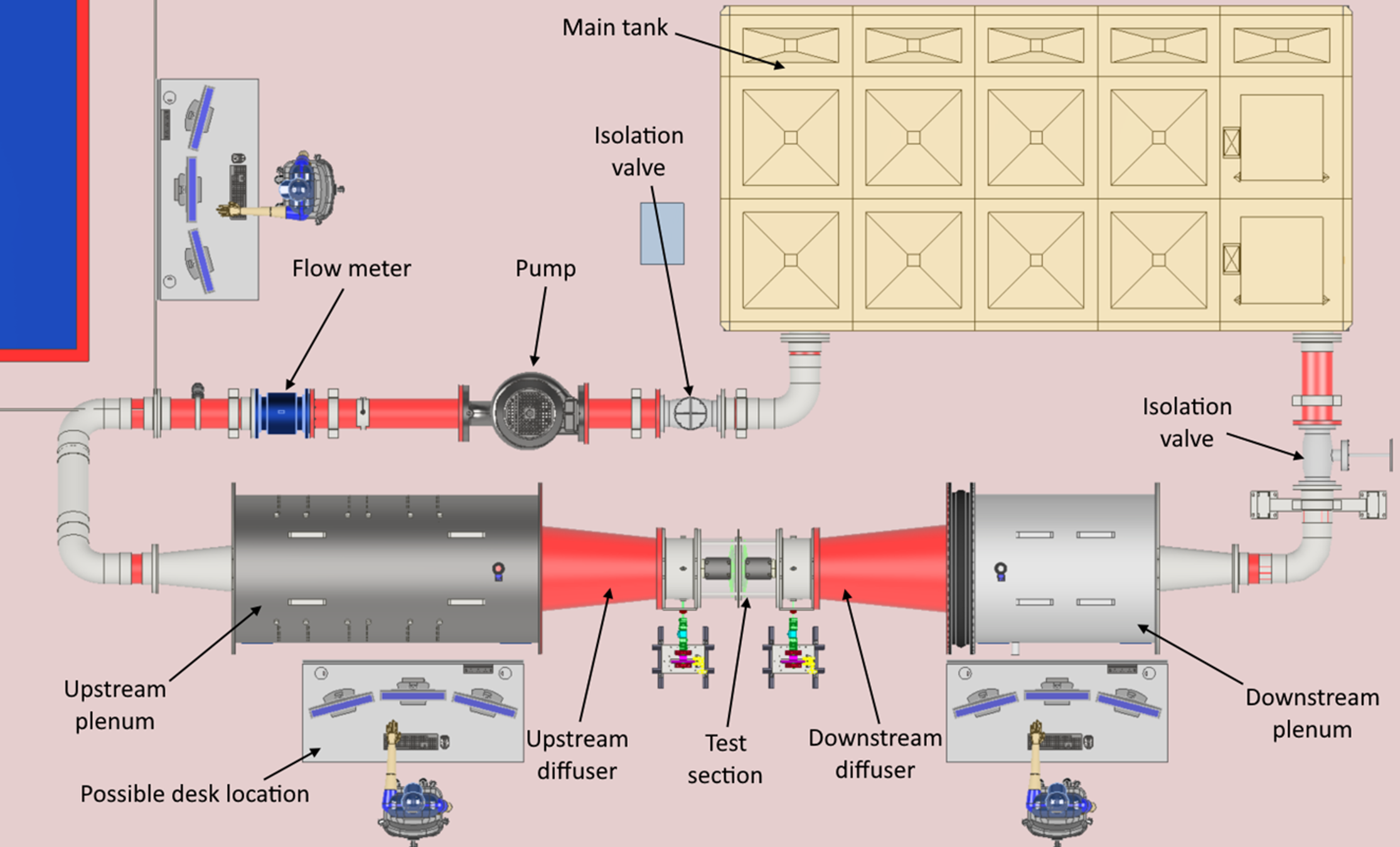
Overview of the test turbine rig
A longer-term goal for the project is to develop a field demonstrator and the project has already “considered quite a number of locations across the UK” according to Gray.
The current preferred location is in the flue gas desulphurisation lagoon channel of the decommissioned Aberthaw coal power station in south Wales.
“That’s where we’re looking at putting in a 100kW demonstrator,” she explained.
This channel is about 15m deep and 5m wide, which “slightly restricts the size of turbine that we would like to install”, Gray said.
The project would also be working alongside Tidetech on this site, which would be testing its own rotating turbines.
“We’re making sure the site is available to anybody that wants to test a tidal turbine in a real environment,” Gray said.
“We think it’s going to cost between £3M and £4M to install it and could generate for our turbine around 200MW per year, just for the demonstrator.”
Looking further ahead
Even further down the line would be a commercial pilot, which “could be an even larger scale demonstrator, or actually a full size tidal turbine, but maybe just one or two of them”, Gray said.
All of this will, it is hoped, ultimately feed into the development of a full-scale tidal range project.
“As much as it’s a proven technology, we haven’t done it yet in the UK so it’s [about] building that confidence with investors, government and stakeholders,” Gray said. “Hopefully this staged approach will give that opportunity to build that confidence within the UK.
“We believe that [the project] can improve the levelised cost of energy for tidal range, really proving that it is comparable to other renewables.”
She said that the team has also undertaken a levelised cost of energy study. They took eight different schemes ranging in size from 160MW to 8GW and, based on information available, calibrated with a 2D model.
“We looked at different modes of operation, thinking about the storage, the hold levels, different ways that the schemes could be controlled,” she explained. “And, ultimately, from that we showed that even with existing technology it is comparable with nuclear.
“Nuclear currently is quoted at £128/MWh and we calculated that existing technology for tidal range would come in at around £123/MWh. But actually, if you look at the enhanced technology, there’s an opportunity to get below that and even closer to floating offshore wind at around £90/MWh – that’s due to the improved efficiency with the bi-directional turbine approach.”
Gray finished her presentation by talking about her recent visit to the Sihwa tidal power station in South Korea.
“For me, it made it more real that it is a huge civil engineering project and the turbines are a small part of that,” she said. “It just showed me how much the civil engineering is just standard stuff that we do across the UK, so it shouldn’t be something that anybody’s afraid of; it’s just adding those turbines to it that just tweaks it a little bit.”
Like what you’ve read? To receive New Civil Engineer’s daily and weekly newsletters click here.

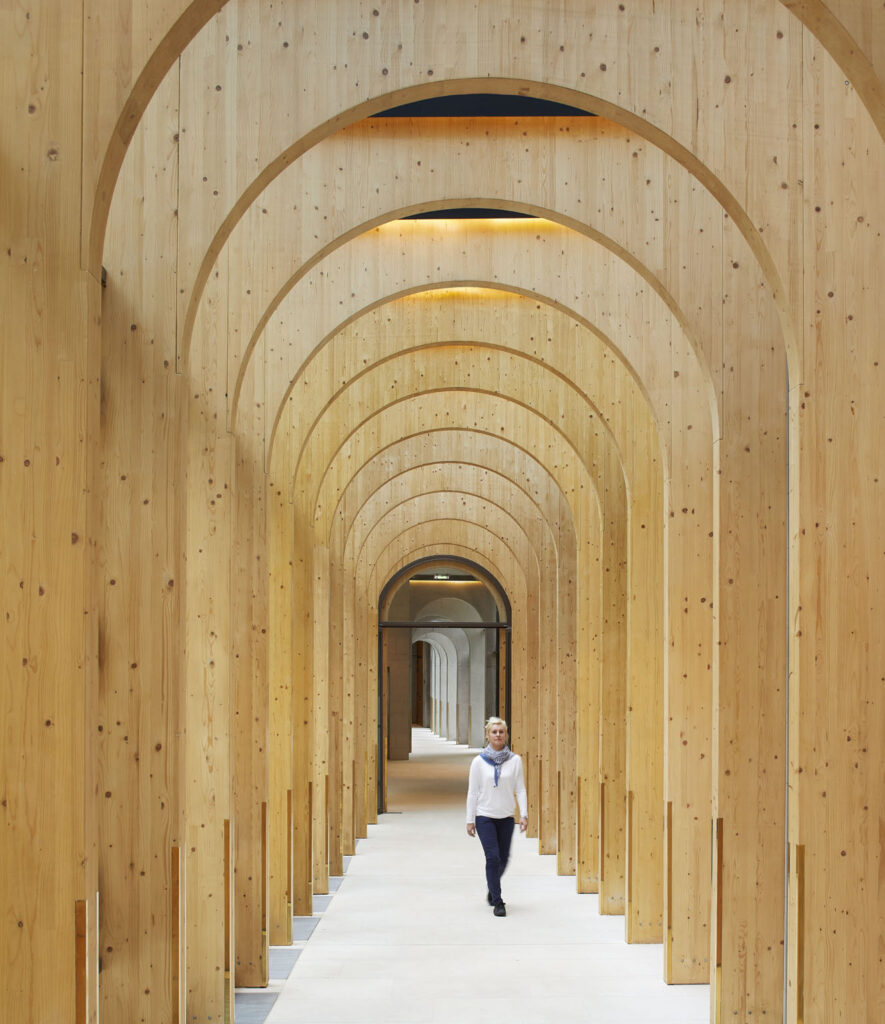
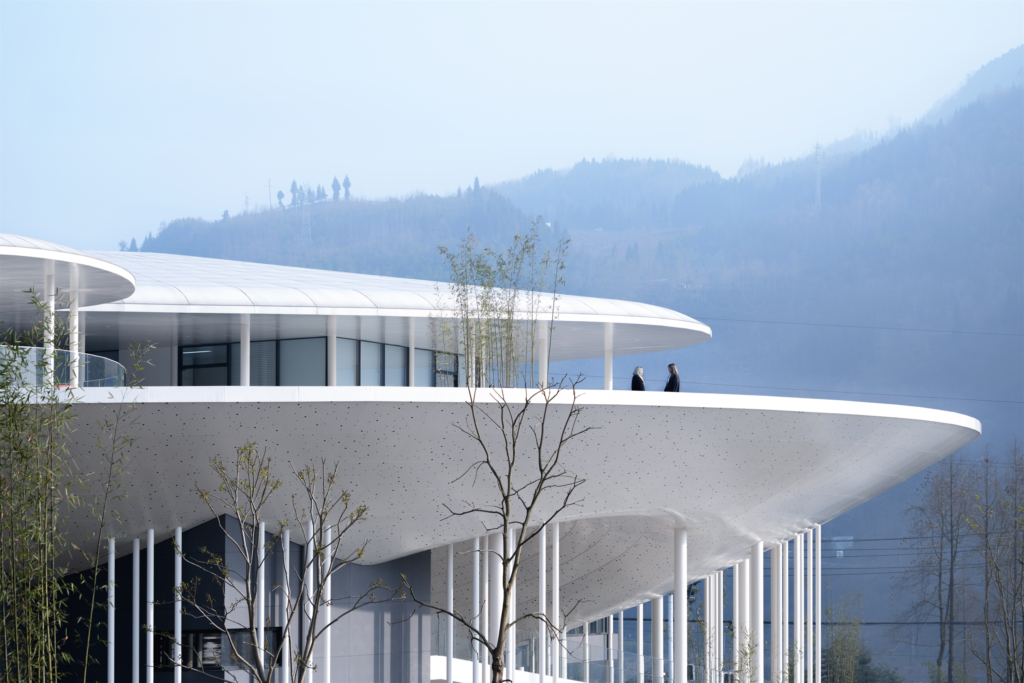

Responses